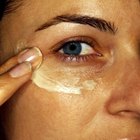
Axel Bueckert/iStock/Getty Images
Vitiligo is a progressive skin disease characterized by loss of skin pigment. The cause is unknown and there is no known effective cure. Current therapies focus on slowing its progression and camouflaging the disorder. However, recent research has shown that an active compound in black pepper may stimulate repigmentation of the skin.
Facts about Vitiligo
Vitiligo is a skin condition in which patches of skin become depigmented due to non-functioning or dead melanocytes, the cells that produce pigment in the skin. The condition is most noticeable in dark skinned people when it occurs on the extremities. The depigmented areas of skin may be small at first but can enlarge and even change shape. There are many different types of vitiligo that are classified by the severity and location of change in pigmentation.
Possible Causes
The causes and progression of vitiligo are poorly understood. Vitiligo is likely an autoimmune disease and there is some research such as in the May 2010 issue of the "New England Journal of Medicine" that suggests it may have a basis in genetic mutations. The March 2007 issue of the "New England Journal of Medicine" reports that other autoimmune diseases may promote the progression of vitiligo such as Addison's disease which affects the adrenal glands. The disease can have severe psychological impact on certain individuals as reported in the journal "Psychotherapy and Psychosomatics."
Effects of Black Pepper
There is no cure for vitiligo but there are several therapies that have shown to have an improvement. One possibly natural treatment for vitiligo is black pepper. Piperine is the substance in black pepper that gives it its heat and many studies have been performed on the role of this compound. One study in the "British Journal of Dermatology" showed that when animals were treated topically with piperine, pigmentation of the skin was increased. Piperine may stimulate inactive melanocytes in the skin leading to pigmentation. For this treatment to be effective, crushed black pepper or its essential oil must be applied to the skin. However its effectiveness in human patients requires further research.
Other Treatments for Vitiligo
Another way to slow the progression of vitiligo is to wear sunscreen and protect the skin from sun exposure. This method is effective for people with light skin to reduce darkening of the unaffected areas of skin. Steroid cream may also be applied to stimulate melanocytes but can have side effects especially in children according to the "Journal of the American Academy of Dermatology". The journal "Pigment Cell and Melanoma Research" describes the use of chemicals such as monobenzone to depigment the unaffected areas of skin but this may take years to accomplish.
Related Articles

Natural Ways to Get Rid of Scabies

Fraxel Laser Treatment Dangers

Long-Term Health Risks of Laser Hair ...

Jojoba Oil Benefits

What Are the Benefits of Extrapone ...

Uses for Castor Oil on the Skin

What Are the Dangers of Men's Brazilian ...

The Best Facial Moisturizers for People ...

Uses for Selsun Blue

Chasteberry for Acne

Traditional Uses of Cuscuta

Benefits of Shea Butter and Coconut Oil ...

Toxicity of Peppermint Oil

What Are the Dangers of Photofacials?

What Is Aloe Good For?

Can LED Light Get Rid of Brown Spots on ...

Hydroquinone & Dark Circles

The Difference Between Retin A & Renova

Fraxel Repair Vs. Restore Results

Aloe Vera & Seborrheic Dermatitis
References
- "New England Journal of Medicine"; Variant of TYR and Autoimmunity Susceptibility Loci in Generalized Vitiligo; Y Jin et al; May 2010
- "New England Journal of Medicine"; NALP1 in Vitiligo-Associated Multiple Autoimmune Disease; Y Jin et al; March 2007
- "Psychotherapy and Psychosomatics"; Stressful Life Events, Social Support, Attachment Security and Alexithymia In Vitiligo; A Picardi et al; May 2003
- "British Journal of Dermatology"; In Vivo Evaluation of Piperine and Synthetic Analogues; L Faas et al; May 2008
- "Journal of the American Academy of Dermatology"; High-potency Steroid Use in Children with Vitiligo; J Kwinter et al; February 2007
- "Pigment Cell and Melanoma Research"; Monobenzone-induced Depigmentation; JG van den Boorn et al; June 2011
Writer Bio
Based in Boston, Dr. Timothy Blalock was a senior scientist and regulatory writer at pharmaceutical companies where he developed preclinical research models, authored manuscripts and wrote grants/regulatory documents. He has produced many published scientific articles and is a member of the American Medical Writers Association. Blalock holds a Ph.D. in biomedical science from the University of Florida.
Photo Credits
Axel Bueckert/iStock/Getty Images